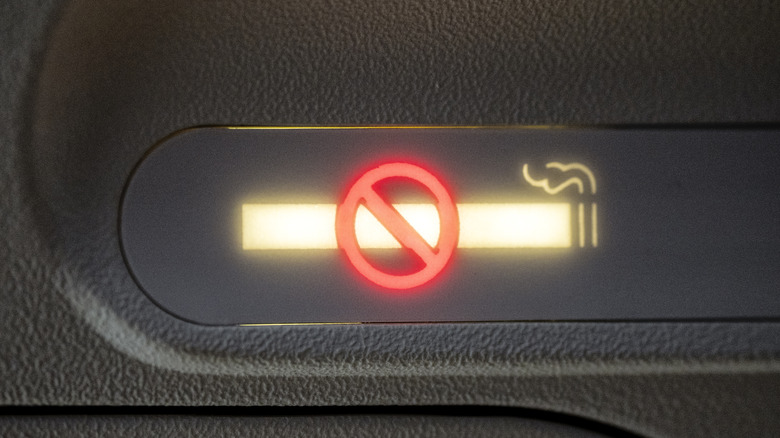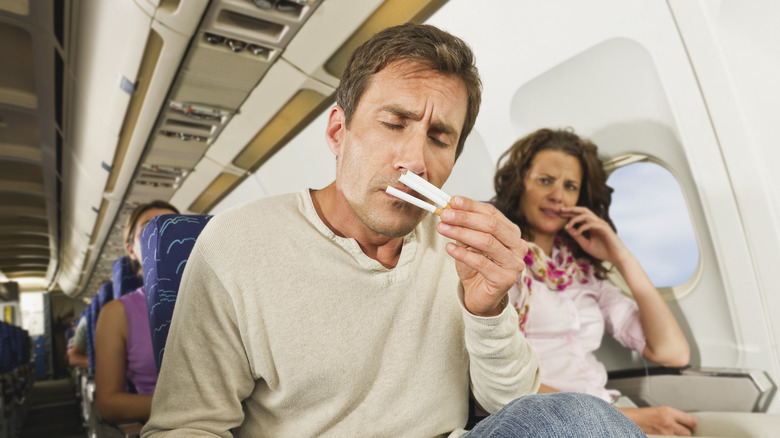Why Do Airliners Still Display 'No Smoking' Signs If Smoking's Banned On Planes?
Smoking has been banned on US flights since 2000, with some few exceptions. Yet, the no-smoking light is still a feature on every modern commercial plane. You'd think that after over two decades, the need to remind us that smoking isn't allowed in airplane cabins would be redundant. Indeed, the Federal Aviation Administration (FAA) only ruled in 2024 that the "No Smoking" sign doesn't need an off switch. So just why do we still have No Smoking lights on planes? For airlines, the question takes on extra relevance given the grounding of aircraft in early 2024 over what could be considered a trivial matter. The incident involved the grounding of five United Airbus A321s, all of which had No Smoking signs that couldn't be turned off.
This incident gives us a clue to the continuing existence of No Smoking signs. Put simply, it is down to legislation. The FAA, despite somewhat loosening the regulations since the United incident, is unlikely to mandate the complete removal of the signs. While last year over 50% of Americans took a commercial flight — the first time this has happened — it's worth noting that over 10% have never flown.
The regulations exist for reasons of public health and safety, with inhaling second-hand smoke and the danger of fire being two of the primary reasons. In short, the signs endure because they are the law, but they also still fulfill their original purpose — as a simple reminder that smoking is banned in aircraft cabins.
Smoking on airplanes - consigned to the ashtray of history
Both the smoking signage and the ashtrays on planes are more than just historical artifacts. The ashtrays are still present in airliners' bathrooms due to some people's ignorance or flauting of the no-smoking rule — they exist to provide a safe way to extinguish cigarettes. However, it wasn't always this way. Some of us are old enough to remember that one of the choices you made when booking a flight was whether to choose a smoking or non-smoking seat; smoking areas were typically at the rear of the aircraft.
It was also a time when each seat, and not just the bathrooms, had access to an ashtray. During that era, the No Smoking Light told the passengers when it was safe to smoke. Going back a bit further, on some flights, passengers were even gifted in-flight cigarettes. And, on non-pressurized flights, it wasn't unusual for passengers to discard their lit cigarette ends out of the plane's window. A problem that was taken seriously enough that the US Department of Agriculture warned that lit cigarette ends dropped from planes were a real threat to America's wildernesses.
However, by the year 2000, smoking was gone from all US flights and many other countries (China became the last country to ban the practice in 2017). The signs may be a reminder of aviation's past, but smoking in planes is still taken seriously enough that the FAA still mandates their presence — off switch or not.

